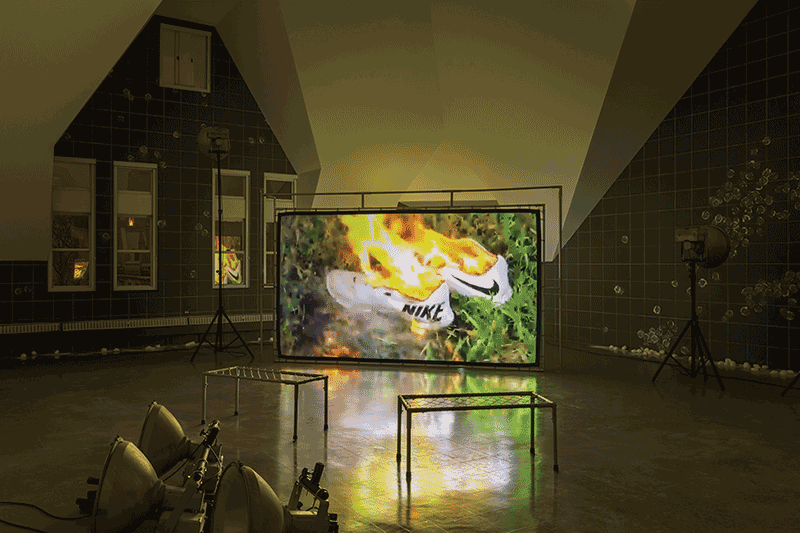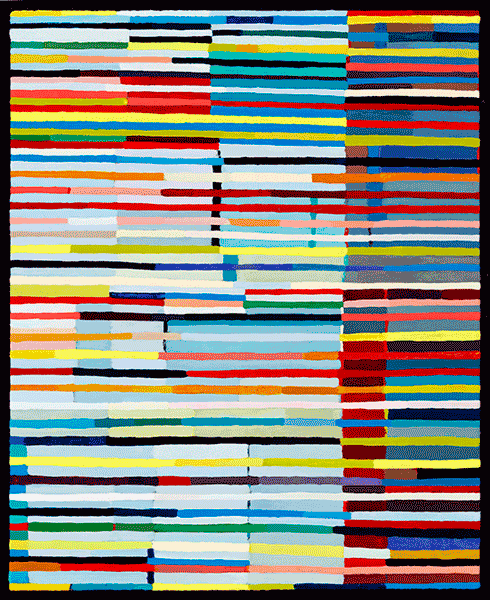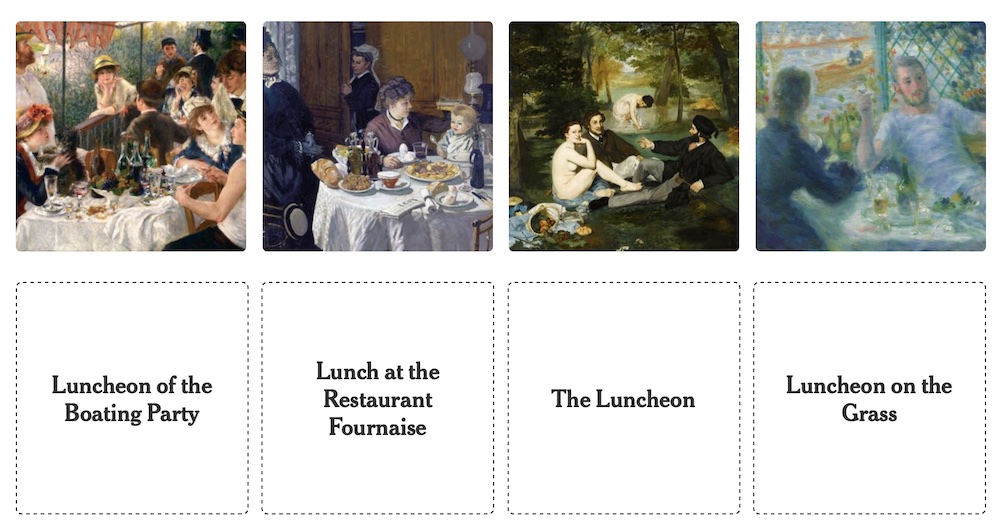Taking the Temperature in 2021: How Is It Actually Going in Chicago's Art World?


By GINNY VAN ALYEA
Last fall we asked some local art world figures what their 2021 Art World Predictions might be. At the time I saw two main scenarios that could shape this year: Life with a vaccine, and life without. Fortunately, we are now several months into a remarkable vaccine development effort and rollout, holding tight to all the cautious optimism we can summon. With this progress in mind, I wanted to check in again with the local art community to see how things are actually going.
As in the fall my questions seek everyone’s candid response to how they have been faring and to get their best guess at what’s next. Responses are grouped by topic. I am grateful to those who candidly shared their collective wisdom and hopes for the future as we move through another year.
On 2021 vs 2020
How are things going for you so far this year?
Catherine Edelman, Catherine Edelman Gallery: It’s been a very sobering year, as the pandemic forced me to rethink the gallery model.
Tom McCormick, McCormick Gallery: This year so far is a continuation of last, which was outstanding. We finished the year on par with any normal, good year, even with the gallery essentially closed. Almost all sales were out of town and I became a one-man shipping juggernaut. The FedEx store reserved a private parking spot for me (kidding). Demand for certain work, especially from our estates and most especially by women, is through the roof and we cannot meet demand.
Julia Nucci Kelly, Asst. Dir. for Marketing & Communications Krannert Art Museum, University of Illinois: KAM has been open since February. Much of our staff is still working from home, but unlike last year, we’re able to have our major student art exhibitions (MFA and BFA) in person. That feels like progress. KAM is addressing multiple pandemics — not just COVID, but political division, racism and violence, and struggles for our environment — as much as we can through art, including exhibitions like Homemade, with Love: More Living Room that creates and holds space for Black girls, women, and femmes in the museum, providing space to gather and support one another with art space to create. In the community, we’re hosting Pandemics as a Portal to Change, a virtual community exhibition that gathers creative writing, visual art, music, and performance centered on hope, encouraging artists of all kinds to envision what we can make better beyond these struggles and pain.
Kathleen Waterloo, artist: 2021 has been a whirling continuum of 2020, which proved to be one of my busiest years as an artist. I was very fortunate just prior to COVID-19 to open a solo exhibition in River North at Addington Gallery. The following week Mayor Lightfoot put the city in lockdown. My studio is isolated, so I was able to continue working almost daily on projects while maintaining social distancing. Currently I’m juggling works for a solo exhibition late 2021 at Circa Gallery in Minneapolis, in addition to a few commissions. As an artist during this bizarre time in our society, I am feeling very blessed.
Karsten Lund, Curator: I don’t have a simple answer, but I’ve felt grounded by my work at the Renaissance Society throughout everything. I’m grateful to be at a nimble, resilient institution, and it has been energizing to be working very closely with a number of artists during the past year, even if most of our conversations have been over Zoom.
At the Ren, we’ve been still able to do a lot, even against such headwinds. I keep returning to the fact that we have a strong close-knit team, and even before the pandemic our museum has been designed to really channel our resources towards our program and artist’s projects, which has made all the difference in a hard year like this.
WORKING – OR NOT WORKING – WITH CLIENTS
Have you been able to engage relatively well with current and new clients or patrons?
Catherine Edelman: Many of our regular clients have stayed home, unwilling to venture to the gallery. But e-blasts, Zooms, etc. have helped us maintain a connection. Now that we are open by appointment only, new clients have emerged. I think the fact that they can have a private experience has been very powerful.
Tom McCormick: Yes. One advantage to doing this for nearly 50 years is that you know a lot of people and they know you. A good reputation is the best thing one can develop, full stop, to weather any storm.
Julia Nucci Kelly: Yes — our community has embraced the idea that the museum can be a safe in-person activity, and we know KAM plays a role in wellness both on campus and in Champaign-Urbana. Through our virtual programs, we’ve been able to engage a far broader geography vs. in person only. We know virtual programs are a different experience, but we are coming to understand that they supplement what we do in person and make arts programming more accessible.
Kathleen Waterloo: Thanks to email, cell phones, the internet, and Zoom I’ve been able to engage with current and new clients in addition to gallerists quite well. Most are familiar with my work already, so communicating size, color preferences, budget, etc. are fairly easy to discuss. Digital images of a site, wall location, and surrounding space further helps a successful end result.
Karsten Lund: Some projects, such as publications, can adapt relatively easily to working from home. We finished a 400-page book with LaToya Ruby Frazier this winter, which I still draw inspiration from. Now I’m working on a monograph with Kevin Beasley coming out later this year.
It’s required accepting a lot of uncertainty and brought new challenges, for sure, but I’ve also opened three exhibitions this year, at least for more limited in-person audiences. That includes solo shows by Haig Aivazian and Jill Magid, and in ways that speaks volumes to their own resilience, both artists produced ambitious new works.
We’ve taken this as a time to experiment too. As we’ve shifted to online talks and virtual exhibition tours, and also debuted a new digital platform, Renaissance TV, we’ve had viewers tuning in from many different countries, with great attendance. We will carry that forward and keep exploring these expanded possibilities for a global audience, or those who can’t visit us, even as we return to in-person programming.
IT’S STILL HARD...
What challenges remain for you and your business/space since the pandemic began last spring?
Catherine Edelman: Creating engagement. Art fairs were a critical part of our business model. It’s been a challenge to introduce new work/artists without that network.
Tom McCormick: Even though we are selling well I feel sorry for our contemporary artists (as opposed to the dead ones) as their exhibitions are not well attended. Even when attendance does not equate to sales it is still a great time for friends, family and interested collectors to see the stuff, and COVID has put a lid on a lot of that,
Julia Nucci Kelly: I think holding our communities together and supporting one another are our biggest tasks ahead. We’re working hard to make every aspect of the museum’s work accessible to all, and our Curator of Academic Programs Liza Sylvestre is a leader for our staff in that area. We’re also looking forward to when we can do robust school and family programming again as well, so charting the path forward and doing it together in a way that is inclusive and just is an important challenge for us to meet head on.
Kathleen Waterloo: Since many galleries temporarily went online and others, sadly, closed their doors due to COVID-19’s economic impact, a few galleries now show my work online only. My work is best viewed in person. If a potential client is only viewing my work digitally some things get lost in the translation – the translucency of the encaustic medium, intimate details that are lost due to the small scale of a cell phone or computer screen, and the experience of seeing the artwork itself which is an ‘object’ in its own right.
Karsten Lund: Certain challenges have been unavoidable but we were able to work around them, such as the fact that artists mostly haven’t been able to come on site to install. But more importantly, I think we need to be responsive to the widely varied challenges and hardships different people are facing this year, whether artists, our audiences, or our collaborators. Care feels like an important word and a way of being, more than ever, now and into the future. I continue asking myself how as curators we can meet our moment and what are the best ways we can support artists’ work as our larger contexts shift and so many pressures continue.

WHAT ABOUT ARTISTS?
How are your artists – or your contemporaries – doing?
Catherine Edelman: I started a monthly Zoom meeting with my artists, in an effort to bring everyone together. It’s been an amazing experience for everyone, as we work together to advance the mission of CEG.
Kathleen Waterloo: Ex-studiomates and artist friends stay in touch and we give each other critiques, opinions, moral support and pep talks. We like each other’s social media posts. It’s all been vital during the past year. Early during COVID–19 some artists were locked out of their studio buildings for months – a devastating blow. Those who had studio access and continued working did so diligently; it was the fuel needed to keep them going mentally. Most were prolific. Now many of us are also prepared to face the future with a toughened stamina, honed during this pandemic. I’ve seen a few artists, not previously working, who have emerged from isolation producing new and ridiculously stunning work that comes from being either on lockdown, in fear, actually sick, or recovering from 24/7 child care and home schooling – a situation which has affected many artists and non-artists alike. They are exploding with creativity and waiting impatiently to rock the town.
Tom McCormick: The dead ones are still dead, but thriving in the market! My living artists, mostly from Chicago, seem to be getting on OK, at least they are not complaining to me.
IF THE GLASS IS HALF FULL IS IT ONLY BECAUSE YOU’VE BEEN DRINKING?
What are you optimistic about?
Catherine Edelman: December in Miami. I believe collectors are hungry to see art in person, and the art fairs in Miami will be a barometer of the return to some semblance of normalcy.
Amy L. Powell, Krannert: We are excited to reunite with objects and continue to build community in our spaces. In addition to A Question of Emphasis: Louise Fishman Drawing opening this fall with questions of queer feminist drawing and abstraction, we’re opening Crip*, a group exhibition and symposium curated by Liza Sylvestre that addresses disability and intersectional thinking. Things cannot “go back to normal,” and we are excited to center artists and our audiences to figure out ways of transformation, together. We’re optimistic about the lessons we learned for virtual content and programming, and hope to take those forward.
Kathleen Waterloo: Galleries, museums and even art fairs will fully reopen their doors in the near future. Perhaps a few precautionary measures from COVID–19 will remain, but I’m eager to see public space become just that again, with people able to become the social animals they are. I’m still concerned about the galleries that cannot, or won’t, reopen and will only have an online presence. I recognize that for many that digital business model works, and it might be here to stay. The virtual world has been a lifeline for many attempting to keep the arts afloat. I’m hopeful that physical galleries are also here to stay. Fund the arts now – visual, dance, theater, music, film – let’s get them back on their feet.
Karsten Lund: I draw so much optimism from artists, and this year is no exception. As much as ever, I’ve been reminded of how they help us see the world differently, almost in real time in some cases. LaToya Ruby Frazier, Haig Aivazian, and Jill Magid’s projects will all stay with me in that way.
Maybe most of all though, this feels like a moment when so many things have the potential to be recalibrated, for museums and other institutions and in our individual lives. Change feels possible when it comes to systemic racism, inequality, accessibility, and our looming climate crisis, though that work will have to carry on long beyond this year.
Tom McCormick: Oh, I’m very optimistic about everything. While many, many people were devastated economically by COVID, many collectors and others with financial means have been willing to spend more than ever. This will surely level out once things return to some sort of normal, but something good is always just around the corner.
That from Mr. Rose Tinted Glasses!






